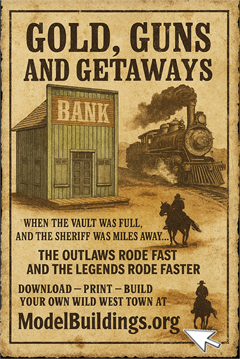Everything on model trains, model railroads, model railways, locomotives, model train layouts, scenery, wiring, DCC and more. Enjoy the world's best hobby... model railroading!
Adding a Decoder
Geoff writes:
“Hello, I have OO9 (UK speak for HO narrow gauge). I’m planning to add a decoder to a Tomytec N gauge chassis for a narrow gauge railcar project. The connection from the wheels to the motor is by metal strips. As there aren’t any colored wires, I’m not sure which “side” of the motor and chassis to connect the red and black pickup wires and the orange/grey motor wires of the decoder. I’m not sure if it matters anyway, since the railcar doesn’t really have a front and back.”
If you are able to assist Geoff, please add your comments under his post.
4 Responses to Adding a Decoder
Leave a Reply















As far as the wire colours are concerned, it doesn’t matter as long as you’re not planning to run it on DC as well as DCC as the direction the locomotive goes can easily be reversed by reprogramming it using the controller – if your controller doesn’t have a specific button for doing this easily, then a google search will help you find instructions to change CV29 on your particular controller.
If you also intend to run it on DC and it goes the wrong way, then it’s just a case of reversing the orange and grey wires and then changing CV29 as above if necessary.
The bigger challenge may be isolating the motor from the metal strips connecting to the wheels. Not something I’ve ever done but I’m sure another google search will help here.
Good luck!
It wont matter which way around you wire the track/wheel wires as long as they go to the red and black on the decoder wiring, same as motor, as you correctly worked out it would only impact which way it travels, which can always be changed by programming a different cv value.
(In addition to the above,)
On regular DC locos, the right rail is positive when the loco is going forward, so on DC you can swap pickup or motor wires.
Most DCC decoders can be set to run a loco on DC (but only for plain DC, not PWM DC controllers).
Thanks everyone for the comments. As to isolating the motor, that’s the easiest part! There’s a metal strip running down each side of the Bo-Bo chassis connecting the pickups. The motor is then connected to the pickup strips by metal strips that simply press against the pickup strips, so I just have to bend them up.
The hard part is going to be soldering the decoder wires to the pickup strips, as they sit on the plastic chassis, so I’ll need to do it without melting the plastic!